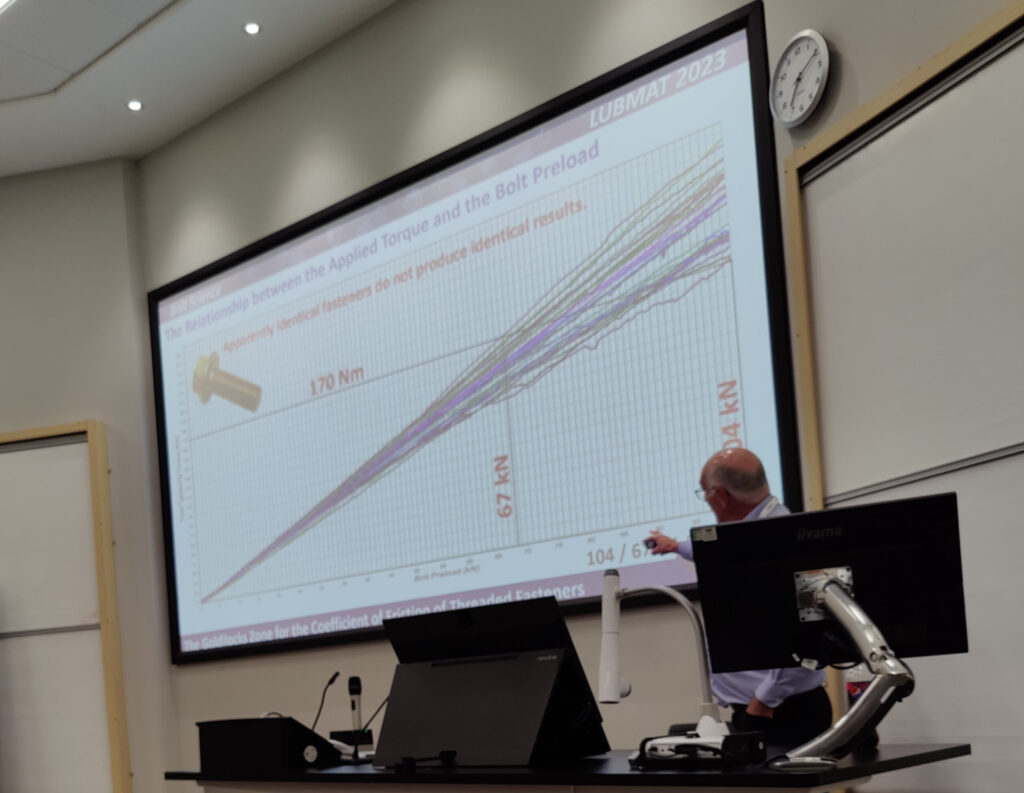Approaching his 71st year, Bill Eccles humbly reflects that no matter your experience, it is always limited. Yet, few in the field can claim to have seen more bolting-related incidents or performed more joint analyses than Bill. With his involvement in standards organizations and even court cases surrounding bolting failures, his expertise is unparalleled. Known for his focus on the physics behind bolting and his ability to adapt, Bill has sold his bolt calculation software to some of the largest most redeemed companies of the world – including NASA. One of his focuses now is on integrating probabilistic approaches into his calculation software and developing training courses. Here’s why.
Q: Bill, what led you to start Bolt Science in 1992, and how has the industry evolved since then?
Bill Eccles: I was an engineering manager back then, but I was always more interested in the technical side, especially bolting. Founding Bolt Science gave me the freedom to focus on what truly interested me while having more control over my own career. At that time, there was less understanding of the physics behind bolted joints and clamp force. Over the years, the industry has evolved, but it remains slow to change. New methods take time to be accepted, and many still cling to outdated practices.

“Thanks to modern technology, I can continue doing what I love without the need to travel as much.” — Bill Eccles during the interview with Carin Lagerstedt over Microsoft Teams.
Q: Could you explain how the understanding of preload versus torque has changed and why it’s important?
Bill Eccles: Over the years, the focus has shifted from torque being the “be-all and end-all” to understanding that it’s really the clamp load that matters. I still encounter people who believe torque is the only measurement to care about. But torque is just one factor. For instance, there was a case where a rusty nut on a railway system led to a major accident. The torque was specified, but due to high friction, the clamp load wasn’t achieved, ultimately resulting in a derailment. People are starting to recognize the need for better methods to ensure joint integrity, and that’s where innovations like Strainlabs come in, offering better ways to monitor preload.

Another example case involved a fastener company dealing with a customer who kept breaking their bolts. The fastener company had tested the bolts, and they were to specification, but their standard torque value did not allow for a decreased friction coefficient which resulted in too high a bolt stress. The customer, firm believer in torque being the criteria for a safe joint, kept tightening the bolts to the same specified torque. Now this is not my typical consulting job, but I was able to finally explain to them that adjusting the torque was necessary to maintain joint integrity due to the decreased friction. Torque is not the only criterion for joint safety; clamp load is what truly matters.
Q: How has digitalization transformed the bolting industry, and what advancements do you see on the horizon?
Bill Eccles: Digitalization allows us to analyze more data, which helps us understand bolt tightening better and reduces failure risks. We’re now able to move toward probabilistic design approaches instead of relying on static safety factors. We use tools like preload requirement charts, which compare clamp force to forces acting on the joint to compute design margins.
New innovations like Strainlabs’ preload measurement technology make a real difference too of what is possible now. These sensors allow companies to measure scatter more accurately. With that data it will change the probability of failure significantly, whereas a traditional method will not.
Q: What would you say are the main challenges that the bolting industry faces today?
Bill Eccles: A major challenge is the lack of understanding around the importance of standards. Often, standards are loosely defined on drawings, and this leads to problems. For example, specifying a bolt as 12.9 without clearly stating to which standard—ISO, British, or German—can lead to issues when such bolts are plated. In legal cases, it often all comes down to what was specified in the contract.
Another challenge is the need for companies to verify their assumptions, especially around torque and friction. How do you know your design is valid if you haven’t tested it? People don’t hire me to look at bolts that work well—they hire me when something goes wrong. I’ve seen the results of many accidents, and I always push companies to verify their assumptions experimentally. Never rely solely on torque as your measurement of success. It’s also important to remember that failure is often a result of ignoring these basics. Whether you verify assumptions through using new technologies or experiments, the focus should always be on joint integrity, not just the torque value.
Q: Where do you think the industry will be in 50 years’ time?
Bill Eccles: I believe we’ll shift toward a probabilistic approach when designing joints. Right now, we rely on factors of safety, but these don’t necessarily account for the variability in the real-world conditions. Scatter in clamp force will always exist, and we need to account for it. For example, what’s the probability of a bolt failing if the factor of safety is 1.2? It is not zero since the derivation of the friction coefficient is usually derived from testing. It may seem small, but even a failure rate of, for example 1 in 5,000 can cause significant problems, like a wheel falling off a car can bring significant headaches or impact on that brand. The conflicting demands of a large factor of safety and weight reduction requires judgement and experience to allow an acceptable balance to be achieved. In 50 years, I think we’ll move away from black-and-white safety factors and focus more on probabilistic design to improve safety and efficiency.

